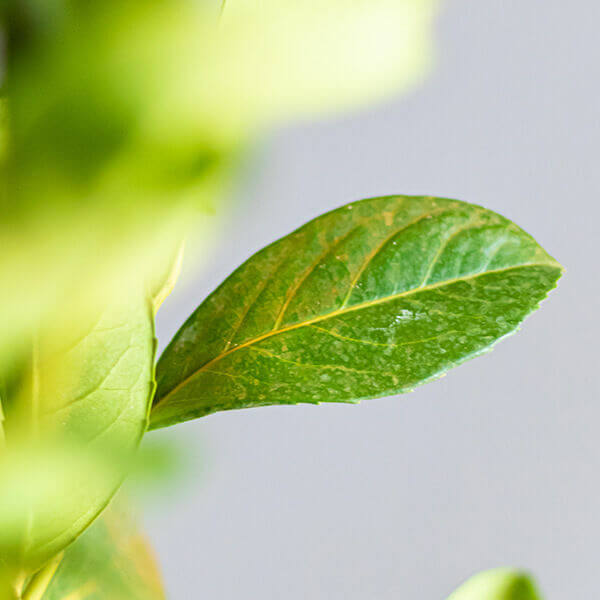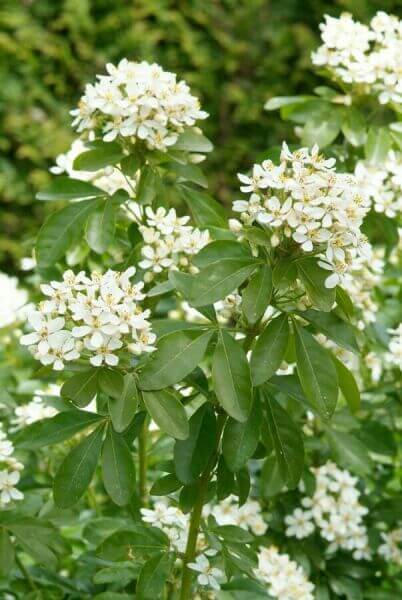Hedging Plants For Wildlife Friendly Gardens
Hedging Plants For Wildlife Friendly Gardens
Blog Article
Best Hedging Plants For Inspired Gardens
Enhance your garden's allure with lavish hedge ranges such as Yew (Taxus), Thuja, Laurel, Photinia, and Bamboo, commemorated for their structural integrity and environmental advantages.
Yew and Thuja offer evergreen coverage and winter resilience, while Laurel offers rapid growth and broad, aromatic leaves.
Photinia includes seasonal beauty with its dynamic red foliage, and Bamboo lends a low-maintenance, tranquil atmosphere.
These hedges improve air quality, minimize sound, and develop tranquil, private areas.
Proper planting, spacing, and maintenance ensure vigorous growth and eco-friendly harmony.
Explore how these lavish varieties can raise your garden's beauty and wellness.
Secret Takeaways
Change Your Garden With Lush Hedge Varieties
- Select Yew for its thick, evergreen growth and unequaled durability.
- Go with Laurel for its fast growth and broad leaves, making sure fast personal privacy.
- Pick Photinia for its dynamic seasonal foliage, which turns a striking dark red.
- Make use of Bamboo for a low-maintenance, winter-hardy hedge with visual appeal.
- Space plants 2-3 per meter and prune regularly for optimum growth and health.
Popular Hedge Plants
When changing a garden with rich hedge varieties, it's vital to think about popular hedge plants such as Yew, Thuja, Laurel, and Photinia due to their distinct characteristics and benefits.
Yew (Taxus) is extremely respected for its durability and dense, green growth, making it a prime option for enduring landscapes.
Thuja is noted for its evergreen foliage and robust winter strength.
Photinia includes seasonal vibrancy with red leaves that darken over time, creating dynamic visual appeal.
Laurel provides fast development and fragrant, broad leaves, suitable for fast privacy.
Furthermore, Bamboo is an excellent choice for atmosphere, offering a low-maintenance, winter-hardy option that enhances the garden's aesthetic with its elegant, swaying walking canes.
These choices deal with a range of horticultural requirements and choices.
Advantages of Garden Hedges
Garden hedges use a wide range of benefits, making them an important addition to any landscape. These natural barriers are affordable to carry out and offer significant wind security, boosting air flow and adding to sound decrease. The dense foliage of hedges like Thuja and Beech makes sure privacy by obstructing presence, developing a peaceful and remote environment.
Hedges also play a vital role in microclimate regulation, offering a stable environment that promotes plant development and lessens temperature variations. Their intricate leaf structures filter toxins, enhancing air quality and adding to a much healthier garden ecosystem.
Additionally, hedges master noise decrease, soaking up and deflecting sound waves to lower ambient noise levels. This dual functionality of offering both acoustic and visual privacy boosts the total serenity and visual appeal of any garden.
Planting and Upkeep Tips
For an effective hedge, meticulous preparation of the planting area is essential. Make sure the soil has correct pH and drainage to support strong root advancement.
Space the plants properly for the selected species. Water the hedge often during its initial growth stage, changing as needed with seasonal changes.
Carry out a systematic pest control and disease avoidance method, utilizing chemical or natural treatments when required. Frequently check for aphids, mites, and fungal infections.
Apply mulch to keep wetness and reduce weeds. Seasonal pruning promotes dense development and air blood circulation, important for plant health.
Following these guidelines will help you cultivate a dynamic, properly maintained hedge that boosts the appeal of your garden.
Spacing and Cutting Guidelines
Spacing and Cutting Standards
Proper spacing and cutting are vital for cultivating healthy, visually appealing hedges. Appropriate spacing ensures each plant receives enough nutrients, light, and airflow.
Follow these guidelines for optimal hedge upkeep:
- Spacing: Position hedge plants 2-3 plants per meter to encourage robust growth.
- Pruning Methods: Routine pruning is essential for preserving desired hedge height and shape. Trim brand-new development in summer and cut down older wood throughout winter.
- Seasonal Care: Adjust trimming schedules and approaches according to seasonal requirements to make sure plant health.
- Hedge Height: Frequently display and trim to preserve the wanted hedge height and attain uniform aesthetic appeals.
Adhering to these actions will guarantee your hedge prospers, boosting both the appeal and functionality of your garden.
Picking the Right Hedge
Choosing the Right Hedge
Picking the proper hedge involves evaluating factors such as mature height, foliage density, and environmental strength. Successful hedge plant choice needs comprehending each species' development characteristics and site-specific versatility.
For example, Yew (Taxus) provides exceptional durability and thick development, while Thuja is noteworthy for its winter season durability. Additionally, thinking about maintenance requirements is vital; fast-growing types like Laurel or Privet demand regular trimming, whereas low-maintenance alternatives like Bamboo or Ivy might be more suitable for those seeking minimal maintenance.
Ecological factors such as soil type, light availability, and moisture conditions should also direct the selection procedure. This cautious method ensures the selected hedges will thrive, providing both aesthetic and practical advantages to the garden landscape.
Delivery and Planting Suggestions
To ensure your hedge plants flourish, they need to be provided by specialized carriers and planted quickly upon arrival.
Follow these necessary steps for successful planting:
- Soil Preparation: Enhance the soil with natural matter to enhance drainage and nutrient content.
- Planting Depth: Create a trench two times the width and equivalent to the depth of the root ball.
- Watering Strategies: Water completely after planting, keeping the soil consistently moist however not saturated.
- Mulching: Use a layer of mulch to retain wetness and suppress weeds.
Client Support and Service
Offered the crucial role of timely assistance in horticultural pursuits, our consumer assistance team is available 6 days a week through telephone, email, and social media to use skilled guidance and quickly deal with any concerns. Their dedication to quick reaction times makes sure client satisfaction by dealing with inquiries associated with plant health, optimal planting techniques, and upkeep schedules.

Schedule
Within 24 hours
This comprehensive support group, enhanced by an outstanding 9.3/ 10 customer rating, highlights our dedication to boosting the gardening experience for each client.
Regularly Asked Concerns
For How Long Does It Take for Hedge Plants to Develop?
Hedge plants usually require one to three years to become fully developed, with the exact duration varying by types and growing conditions.
Efficient care throughout this vital duration is important for robust development. Constant watering, vigilant weed control, and suitable fertilizer application are critical in promoting strong root development.
For instance, fast-growing types like Laurel may establish quicker, while slower-growing varieties such as Yew might take longer. Diligent upkeep speeds up the facility procedure, leading to healthy and dense hedges.
What Are the very best Hedge Plants for Privacy?
The question of the very best hedge plants for privacy involves examining evergreen and deciduous options.
Evergreen hedges like Thuja, Laurel, and Cypress provide year-round coverage, ensuring constant personal privacy.
On the other hand, deciduous hedges such as Beech provide seasonal privacy, shedding leaves in colder months.
Secret upkeep ideas for privacy hedges include routine cutting, fertilizing in spring, and proper spacing-- generally 2 to 3 plants per meter.
Furthermore, consistent watering and persistent weed removal are vital for promoting healthy, dense growth.
Can Hedge Plants Bring In Wildlife to My Garden?
Yes, hedge plants can draw in wildlife to your garden by offering necessary benefits like shelter, food, and nesting websites, consequently enhancing local biodiversity. For instance, yew, holly, and laurel are exceptional for drawing in birds, while ivy supports a range of bugs.
However, it is essential to keep in mind that there are some drawbacks, such as increased upkeep to handle pests and regular maintenance. Carefully choosing and keeping hedge ranges can assist balance these benefits and disadvantages, eventually promoting a sustainable and vibrant community in your garden.
Are There Any Flowering Hedge Plants Available?
Yes, there are flowering hedge plants offered that can boost the appeal of your garden.
For instance, Elaeagnus, likewise called Olive Willow, produces aromatic white flowers in the fall, including a touch of sophistication.
Photinia, another popular option, showcases lively red leaves that grow into an abundant green, developing a vibrant visual impact throughout the seasons.
To ensure these plants flourish, it's important to practice proper pruning strategies and seasonal upkeep, such as trimming brand-new development in the summer season and cutting back in the winter season.
These procedures will assist maintain the health and visual appeal of your blooming hedges.
How Do I Avoid Bugs in My Hedge Plants?
To prevent bugs in hedge plants, utilize natural bug control approaches and keep appropriate hedge care. Present advantageous pests like ladybugs, which prey on harmful bugs, to produce a well balanced ecosystem.
Regularly inspect your hedges for signs of infestation and quickly remove any affected parts to avoid the spread. Make sure the health of your hedges by using balanced fertilizers and providing adequate water.
Utilize mulching to retain soil wetness and appropriate spacing to decrease plant stress and promote robust growth. These practices jointly assist in lessening insect issues and maintaining a healthy hedge.
Conclusion
In essence, selecting the right hedge varieties such as Yew, Thuja, and Laurel can change any garden into a tranquil haven. These plants supply year-round greenery, enhance aesthetic appeal, and deal practical advantages like noise reduction and wind security.
Appropriate planting methods, precise spacing, constant watering, and seasonal trimming are important for optimal development.
Trusted shipment services and professional customer assistance guarantee a seamless experience from purchase to planting, making it easier than ever to elevate your outdoor area.
Garden hedges Additional hints provide a multitude of advantages, making them a valuable addition to any landscape. These natural barriers are cost-efficient to execute and supply considerable wind protection, boosting air circulation and contributing to sound decrease. The dense foliage of hedges like Thuja and Beech ensures privacy by blocking visibility, creating a secluded and serene environment.

Pruning Techniques: Regular pruning is important for maintaining desired hedge height and shape. Trim brand-new development in summertime and cut back older wood during winter.
Report this page